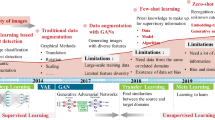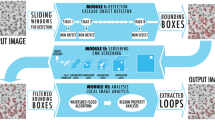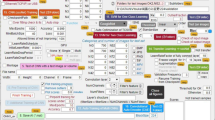Abstract
This paper introduces a framework for creating augmented hard samples, which are new images created to resemble those that a classifier will struggle to classify. This is used for data from an automatic visual defect inspection system, specifically images of vials with and without chipped glass. The hard samples were found by training ConvNeXt classifiers and using the confidences of the classifiers on the training dataset. VQ-VAE2 was used to obtain the latent representations of the hard samples, and a PixelSnail model was used to create new high-frequency details while retaining low-frequency details. The PixelSnail model was pre-trained on a large amount of non-defect images. The augmentation method was applied to a dataset of 200 images and was evaluated by training classifiers to test the effect of using the augmented hard samples. Introducing the augmented hard samples into the dataset was found to improve classifier performance, measured in Area Under Curve (AUC) of the Receiver Operator Characteristic (ROC) curve, from 0.953 to 0.973. The method was tested with augmenting both defect and non-defect images, and the somewhat surprising conclusion is that while using augmented defect images didn’t yield improvements, augmenting non-defect images did.
Access this chapter
Tax calculation will be finalised at checkout
Purchases are for personal use only
Similar content being viewed by others
Notes
- 1.
The code for this project is available at https://github.com/xxxxxx.
- 2.
References
Antoniou, A., Storkey, A.J., Edwards, H.: Data augmentation generative adversarial networks. Ar**v:1711.04340 (2017)
Cubuk, E.D., Zoph, B., Mané, D., Vasudevan, V., Le, Q.V.: Autoaugment: learning augmentation policies from data. Ar**v: 1805.09501 (2018)
Gong, C., Wang, D., Li, M., Chandra, V., Liu, Q.: Keepaugment: a simple information-preserving data augmentation approach. In: 2021 IEEE/CVF Conference on Computer Vision and Pattern Recognition (CVPR), pp. 1055–1064 (2021)
Hu, T.Y.: Sapaugment: learning a sample adaptive policy for data augmentation. In: ICASSP 2021–2021 IEEE International Conference on Acoustics, Speech and Signal Processing (ICASSP), pp. 4040–4044 (2021)
Lemley, J., Bazrafkan, S., Corcoran, P.M.: Smart augmentation learning an optimal data augmentation strategy. IEEE Access 5, 5858–5869 (2017)
Liu, H., Zhao, Z., Chen, X., Yu, R., She, Q.: Using the vq-vae to improve the recognition of abnormalities in short-duration 12-lead electrocardiogram records. Comput. Methods Prog. Biomed. 196, 105639 (2020). https://doi.org/10.1016/j.cmpb.2020.105639, https://www.sciencedirect.com/science/article/pii/S0169260720314723
Liu, Z., Mao, H., Wu, C., Feichtenhofer, C., Darrell, T., **e, S.: A convnet for the 2020s (2022)
Perarnau, G., van de Weijer, J., Raducanu, B., Álvarez, J.M.: Invertible conditional gans for image editing. Ar**v: 1611.06355 (2016)
Razavi, A., van den Oord, A., Vinyals, O.: Generating diverse high-fidelity images with vq-vae-2. Ar**v: 1906.00446 (2019)
Vandenhende, S., Brabandere, B.D., Neven, D., Gool, L.V.: A three-player gan: generating hard samples to improve classification networks. In: 2019 16th International Conference on Machine Vision Applications (MVA), pp. 1–6 (2019)
Zhu, J.Y., Park, T., Isola, P., Efros, A.A.: Unpaired image-to-image translation using cycle-consistent adversarial networks. In: 2017 IEEE International Conference on Computer Vision (ICCV), pp. 2242–2251 (2017)
Zhu, Y., Aoun, M., Krijn, M., Vanschoren, J.: Data augmentation using conditional generative adversarial networks for leaf counting in arabidopsis plants. In: BMVC (2018)
Author information
Authors and Affiliations
Corresponding author
Editor information
Editors and Affiliations
Rights and permissions
Copyright information
© 2023 The Author(s), under exclusive license to Springer Nature Switzerland AG
About this paper
Cite this paper
Høj, B.J., Møgelmose, A. (2023). Synthesizing Hard Training Data from Latent Hierarchical Representations. In: Gade, R., Felsberg, M., Kämäräinen, JK. (eds) Image Analysis. SCIA 2023. Lecture Notes in Computer Science, vol 13886. Springer, Cham. https://doi.org/10.1007/978-3-031-31438-4_4
Download citation
DOI: https://doi.org/10.1007/978-3-031-31438-4_4
Published:
Publisher Name: Springer, Cham
Print ISBN: 978-3-031-31437-7
Online ISBN: 978-3-031-31438-4
eBook Packages: Computer ScienceComputer Science (R0)





